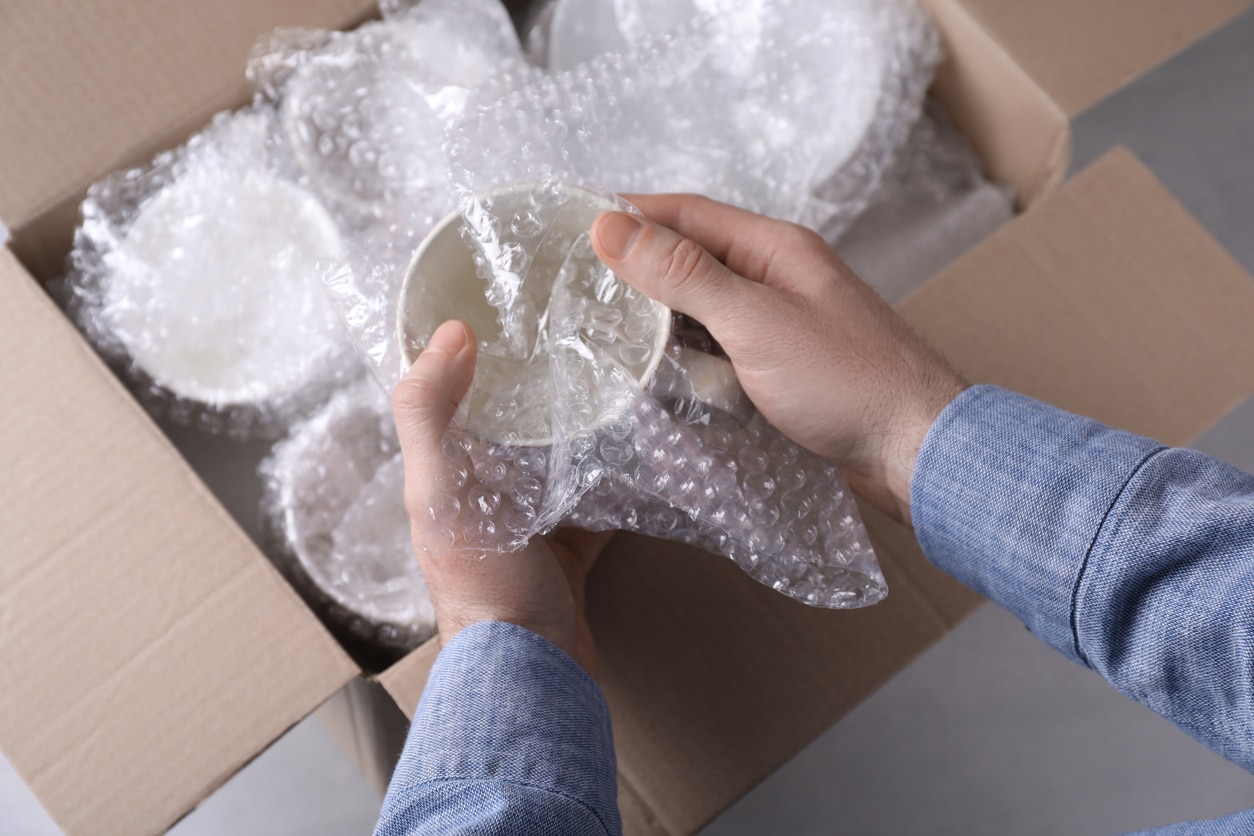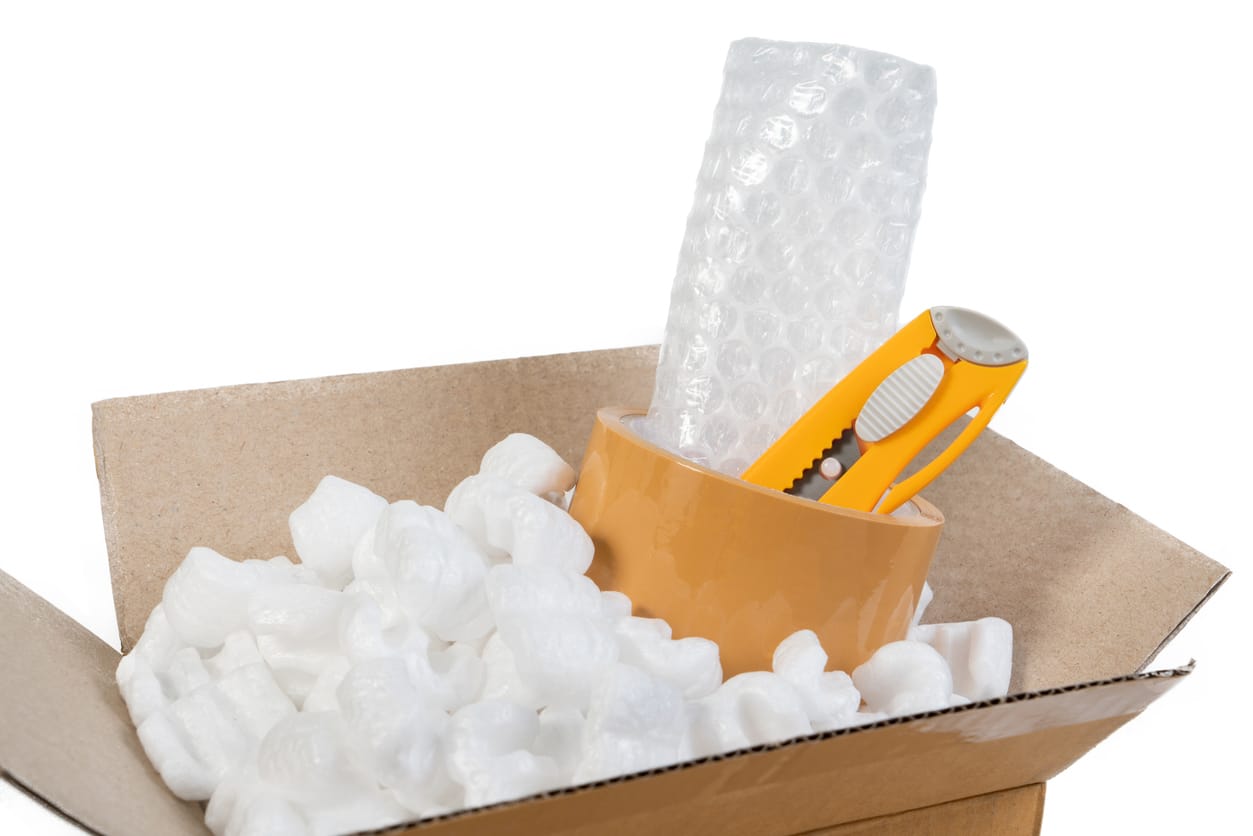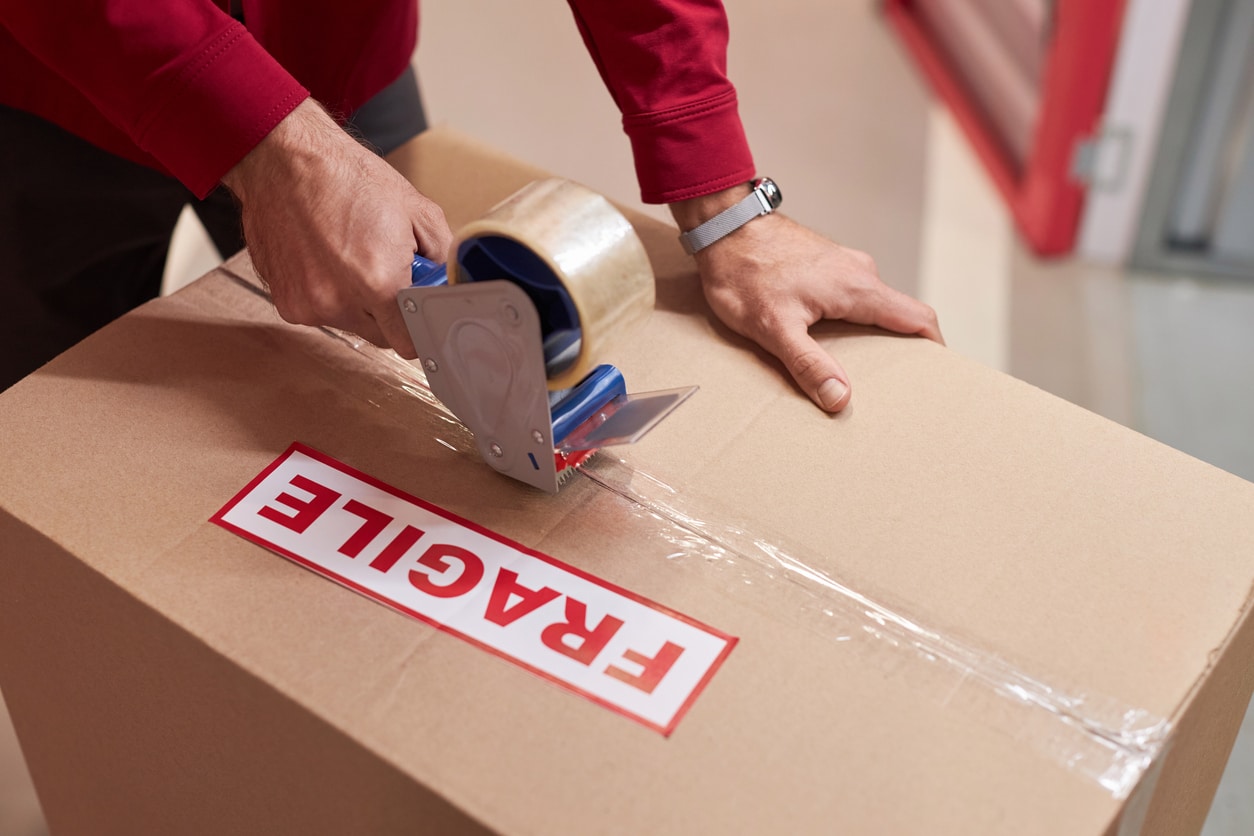Whether you’re relocating across the country or a couple towns over, it’s crucial to protect your most delicate, valuable items from costly damage in transit. The easiest, most effective strategy is to hire professional movers to handle the packing for you. But we get it: sometimes you want to roll up those sleeves and just do it yourself. So, let’s discuss how to pack fragile items for moving—from the supplies to the instructions—straight from our pro movers here at Colonial.

How to Pack Fragile Items for Moving—Best Practices
What is the best way to pack fragile items for moving? The short answer: Be as careful and meticulous as possible. Make sure you have the right supplies, materials, and boxes to protect against cracks, dents, scratches, tears, breaks, and other damage from collisions, moisture, or the elements. Then, follow this guide for a list of step-by-step instructions on how to pack fragile items for moving.
On that note, let’s get to it!
1. Choose the right size heavy-duty boxes
When packing fragile items, you’ll want to use small- or medium-size boxes. Not only will this prevent the contents from shifting around in transit — it will also ensure you don’t overpack the boxes, which can cause items to brush up against each other and crack or shatter.
For even more protection, choose heavy-duty boxes with two layers of cardboard, then reinforce each box with a double layer of tape along the bottom center and both side seams. This keeps the boxes from collapsing when you fill them with heavy or fragile items.

2. Assemble packing materials for fragile items
Now that you have the right boxes, you’ll need to collect an assortment of packing materials for fragile items.
What is the best packaging for fragile items? Choose soft but firm, durable materials that will provide cushioning and prevent your items from shifting inside their boxes. Here’s a rundown of the best packing materials for fragile items—plus, how to use them correctly for safe, secure, and efficient transport:
Bubble wrap
Bubble wrap is ideal for absorbing the impact if a fragile item shifts, rattles, or collides with another hard surface while in transit. Cover electronics, glassware, and breakable home décor with a layer of bubble wrap, then secure it with tape.

Packing paper
Wrap ceramic dishes, coffee mugs, cookware, or small kitchen appliances in packing paper. You can also crumple this material and use it to fill any gaps inside boxes.
Foam sheets
Slide your thin, flat items such as plates, serving platters, framed pictures, vinyl records, or small electronic devices in foam sheet inserts. This will protect them from cracks or scratches without taking up too much space inside the boxes.
Moving blankets
Use durable blankets to cover furniture, large electronics, framed mirrors, artwork, and other heavy, fragile items. You can also use blankets as an extra layer of cushioning at the bottom of each box and to fill in any gaps. Furniture pads (thick, quilted felt cloths) are another effective packing material if you don’t have enough blankets on hand.
Corrugated inserts
Stick a corrugated insert between a TV screen, mirror glass, or other flat delicate panel and the box’s siding. This will create more structural stability, so the fragile item won’t come into unprotected contact with another hard surface and potentially break.
Cardboard separators
Use cardboard separators to divide glassware inside the box, creating individual compartments for each item and preventing pieces from knocking about. It’s one of the best ways to pack fragile items without bubble wrap — just use two layers of packing paper instead.
Cling wrap
Bundle together items that can easily warp or bend (such as wooden bed frame pieces) in cling wrap to reinforce structural stability and protect them from direct exposure to the elements. You can also use cling wrap to secure drawers in place, so they won’t come loose off their hinges and scratch up or bang into other items while in transit.
Furniture sliders
Put these small felt discs beneath the legs of heavy furniture pieces, so you can move them across the floor without causing any dents, scratches, or other damage.
3. Use long boxes for TVs, mirrors, and artwork
Mirrors, electronic devices (like TVs or computer monitors), and valuable or delicate artwork must be packed in long, sturdy boxes that can support their bulk and size. First, protect each item with a blanket or bubble wrap, then cushion the bottom of the box with a foam sheet or another layer of bubble wrap. Finally, slide the item upright into the box (never flat, as this will exert too much pressure on the screen or glass surface).
Read More: How to Pack Framed Art
4. Avoid packing fragile items too close together
If you overpack a box with too many fragile items inside, they can collide into each other during transport, which will likely cause damage.
To prevent this, the safest way to pack fragile items for moving is to wrap them all separately and leave about an inch of space between them in the box. If possible, don’t stack fragile items on top of one another, as this will exert more pressure on their already breakable surfaces.
5. Wrap heavy items in furniture pads or blankets
Before moving heavy furniture (like couches, armoires, office equipment, tables, or pianos) out to the truck, wrap them securely in a protective blanket or furniture pad. This will shield both the frame and upholstery from moisture, dust particles, or harsh elements.
You’ll also want to disassemble the furniture legs and other removable delicate parts, then bundle them with a few layers of cling wrap. Finally, use furniture pads to safely move the item across your floor and out the front door without scratching up the bottom.
Read More: How to Move Heavy Furniture
6. Take extra precautions for dishes and glassware
When packing fragile items in your kitchen such as dishes and glassware, keep in mind that even the slightest movement can result in chips or cracks.
Since these items are often made of extremely delicate materials like ceramic, porcelain, and glass, cover each piece with one layer of bubble wrap or two layers of packing paper, then tape the edges.
You can also slide plates or other flat items into foam sheets. Next, stack the plates vertically (not on top of each other) in the box, then use cardboard separators to pack glassware in another box.
Read more: How to Pack Dishes for Moving
7. Fill in any gaps to keep items secure
Now that you know the basics of how to pack fragile items for moving, let’s talk about what to do once the boxes are full.
If there are empty spaces between each item, fill those gaps with foam sheets, crumpled paper, bubble wrap, towels, or other soft materials. This creates a protective buffer around each item, so they can’t touch one another or shift and rattle around in transit.
Don’t overlook this step — it’s one of the easiest ways to prevent damage.
8. Tape each box securely shut and label it clearly
The final step of packing fragile items is to seal the boxes tightly.
Use durable packing tape to secure both the top cardboard flaps together: place one long horizontal strip of tape in the center seam connecting these flaps, then place two more strips along both top side seams for extra reinforcement.
Next, use a permanent marker to label the top and all sides with, “Fragile,” and “This Side Up,” so whoever loads the boxes will know to handle them with care. Add the contents and corresponding room of each box (i.e., “Dishes, Kitchen”).
9. Be careful moving fragile items to the truck
When it’s time to start moving fragile items to the truck, lift each box by supporting its base, then carry it upright with a firm, steady grip. Never drag a box with breakable contents or hold it at an angle — this can cause dents if the box hits a wall or bangs on a surface.
When you reach the truck, set the box down gently, so that its contents won’t jostle. Place the box in a secure area of the truck (ideally between two sturdier boxes or furniture items) to prevent it from shifting around.
Don’t stack heavier items on top of the box, as that extra pressure could crack, warp, or shatter your fragile items inside.
If at all possible, enlist someone to help you move these boxes. Some fragile items are heavy or awkwardly shaped, which makes them cumbersome to transport alone. Another set of hands makes it easier to balance the weight and maneuver in tight spaces. Even if you plan to DIY this move, it never hurts to ask a friend or family member for assistance.
Colonial Van Lines Has Your Fragile Items Covered
If you’re not sure how to pack fragile items for moving, and you don’t want to risk the potential of costly damage, let our highly trained team of movers step in.
With over 50 years of experience in long-distance relocation, we’ll handle all the logistics for you — from the initial packing to the final unloading — so all your items arrive at their new home in one piece. Contact us for a free moving quote, and let’s get started on your new chapter.

